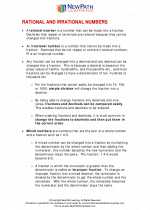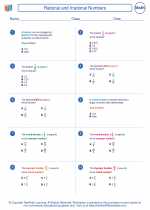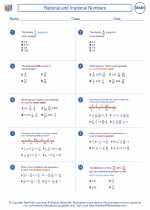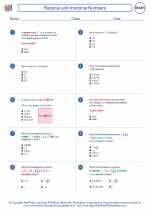Quintic Equations
A quintic equation is a polynomial equation of degree 5. It can be written in the general form:
ax5 + bx4 + cx3 + dx2 + ex + f = 0
Where a, b, c, d, e, and f are constants, and a ≠ 0. Solving a quintic equation involves finding the values of x that satisfy the equation.
Methods for Solving Quintic Equations
- Factorization: In some cases, a quintic equation can be factored to find its solutions. However, this method is not always applicable for quintic equations.
- Using Substitution: By making a substitution, such as letting y = x2, a quintic equation can be transformed into a quartic (degree-4) equation, which may be easier to solve.
- Numerical Methods: When exact solutions cannot be found, numerical methods such as the Newton-Raphson method can be used to approximate the roots of a quintic equation.
- Galois Theory: The general solution to a quintic equation can be expressed using the concepts of Galois theory, but this method is complex and beyond the scope of this study guide.
Study Tips
When studying quintic equations, it's important to:
- Understand the properties of polynomial equations and how they relate to quintic equations.
- Practice factoring higher degree polynomials to improve factorization skills.
- Be familiar with substitution techniques and how they can simplify the solving process for quintic equations.
- Explore numerical methods for approximating roots, and understand their limitations and advantages.
- Consider the historical context and mathematical significance of the unsolvability of the general quintic equation using radicals.
Remember, solving quintic equations can be challenging, but with practice and a solid understanding of the methods involved, you can master this topic!
.◂Math Worksheets and Study Guides Seventh Grade. Rational and Irrational Numbers
Study Guide Rational and Irrational Numbers
Rational and Irrational Numbers  Worksheet/Answer key
Worksheet/Answer key Rational and Irrational Numbers
Rational and Irrational Numbers  Worksheet/Answer key
Worksheet/Answer key Rational and Irrational Numbers
Rational and Irrational Numbers  Worksheet/Answer key
Worksheet/Answer key Rational and Irrational Numbers
Rational and Irrational Numbers 

 Worksheet/Answer key
Worksheet/Answer key
 Worksheet/Answer key
Worksheet/Answer key
 Worksheet/Answer key
Worksheet/Answer key

The resources above cover the following skills:
Connections to the Grade 7 Focal Points (NCTM)
Number and Operations: In grade 4, students used equivalent fractions to determine the decimal representations of fractions that they could represent with terminating decimals. Students now use division to express any fraction as a decimal, including fractions that they must represent with infinite decimals. They find this method useful when working with proportions, especially those involving percents. Students connect their work with dividing fractions to solving equations of the form ax = b, where a and b are fractions. Students continue to develop their understanding of multiplication and division and the structure of numbers by determining if a counting number greater than 1 is a prime, and if it is not, by factoring it into a product of primes.